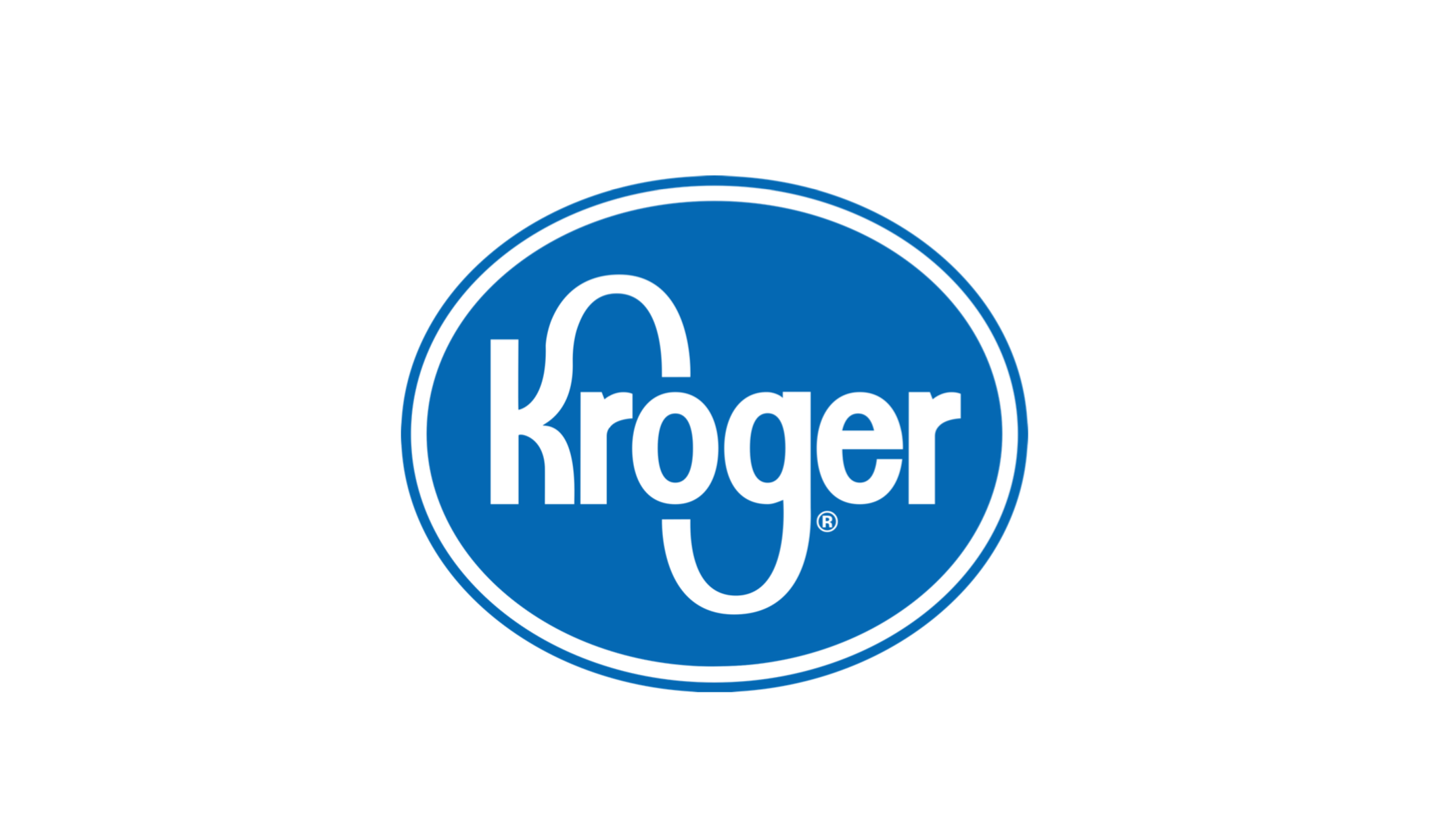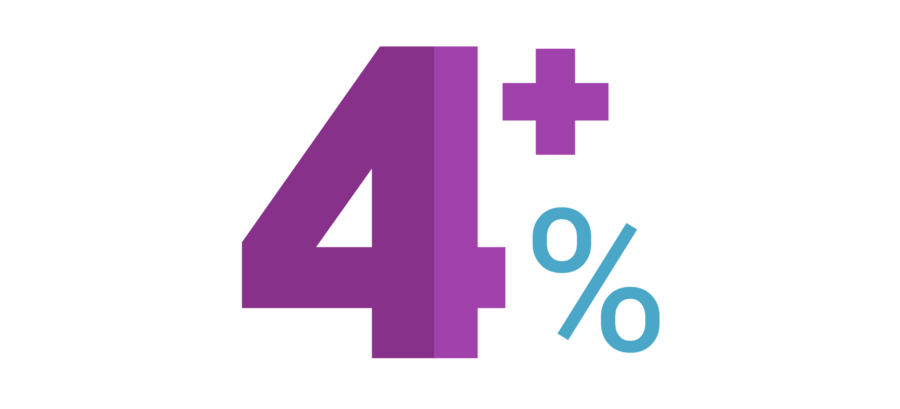
Kroger: Paying Higher Dividends Each Year Since 2006
Founded in 1883, Kroger (KR) is America's second largest grocer behind only Walmart with over $120 billion in annual sales. The company operates over 2,700 supermarkets, many with pharmacies and fuel centers on premise. Kroger's stores are in 35 states and serve more than 11 million shoppers each day.
In addition to traditional grocery shopping, Kroger also offers convenient pickup and delivery options to almost all households within the company's reach.
The grocer stocks shelves with a number of its own brands, including Private Selection, Simple Truth, and its namesake Kroger brand. Accounting for about a quarter of sales, these private label brands are often manufactured in Kroger's own food production plants. This vertical integration benefits Kroger's margins.
All of the company's revenue is generated in the U.S. The company has grown its dividend each year since it initiated a payout in 2006.
In addition to traditional grocery shopping, Kroger also offers convenient pickup and delivery options to almost all households within the company's reach.
The grocer stocks shelves with a number of its own brands, including Private Selection, Simple Truth, and its namesake Kroger brand. Accounting for about a quarter of sales, these private label brands are often manufactured in Kroger's own food production plants. This vertical integration benefits Kroger's margins.
All of the company's revenue is generated in the U.S. The company has grown its dividend each year since it initiated a payout in 2006.
Business Analysis
The grocery industry is marked by many challenges including fierce competition, razor-thin margins, high fixed costs (a single supermarket location costs around $20 million for Kroger to open), perishable inventory, commodity price inflation, and disruption from online grocery sales.
Consumers typically have a number of grocery chains to shop at in their local markets, and most are looking for the best quality produce at the lowest prices. Differentiation is difficult, and Walmart has wiped out many chains based on price alone.
These harsh realities demonstrate the skill it's taken for Kroger to grow to become the second largest grocer in the country. Kroger is one of the best-managed supermarket chains and has increased its market share 14 years in a row, in part by acquiring rivals.
As the #1 or #2 operator in most of its major markets, Kroger’s scale helps it source products at lower costs than smaller rivals and spread its fixed costs more efficiently.
Thanks to its size and high volume flow of guest traffic, the company is also able to invest heavily in technology to understand what consumers are buying and to capitalize on evolving shopping trends such as healthy eating and e-commerce.
For instance, in 2012 Kroger launched a natural and organic food brand, Simple Truth, to serve a growing number of consumers who are conscious and selective about the ingredients that go into their food.
The company has also invested in convenience and now offers online ordering with in-store pickup or home delivery as well as easy-to-prepare meal kits.
In contrast, smaller regional rivals don't have the same resources to invest in their businesses. Kroger can afford to adapt where others cannot.
In spite of its competitive advantages and investments, Kroger has struggled to move the needle in recent years. Earnings have been largely stagnant since 2016.
As a result, management has come to view Kroger's core supermarket business as more of a cost center these days, focusing instead on "alternative profit streams" such as advertising and financial services to power the company's long-term growth.
Kroger's alternative profit streams are centered around media (e.g. advertising opportunities), personal finance services (e.g. Kroger-branded credit cards), and customer data insights (e.g. help brands better market to Kroger customers).
Handling approximately 11 million transactions a day across its grocery stores, pharmacies, and fuel stations, Kroger sees opportunity to leverage its scale and customer insights to transform its business model. The company possesses some unique assets (transaction data, foot traffic, etc) to support these opportunities.
Management expects Kroger's alternative profit streams to deliver growth in the low-single digits over the next several years. Whether or not this growth can continue long-term is unclear, but in the interim Kroger's supermarkets seem likely to remain cash cows.
The grocery industry is marked by many challenges including fierce competition, razor-thin margins, high fixed costs (a single supermarket location costs around $20 million for Kroger to open), perishable inventory, commodity price inflation, and disruption from online grocery sales.
Consumers typically have a number of grocery chains to shop at in their local markets, and most are looking for the best quality produce at the lowest prices. Differentiation is difficult, and Walmart has wiped out many chains based on price alone.
These harsh realities demonstrate the skill it's taken for Kroger to grow to become the second largest grocer in the country. Kroger is one of the best-managed supermarket chains and has increased its market share 14 years in a row, in part by acquiring rivals.
As the #1 or #2 operator in most of its major markets, Kroger’s scale helps it source products at lower costs than smaller rivals and spread its fixed costs more efficiently.
Thanks to its size and high volume flow of guest traffic, the company is also able to invest heavily in technology to understand what consumers are buying and to capitalize on evolving shopping trends such as healthy eating and e-commerce.
For instance, in 2012 Kroger launched a natural and organic food brand, Simple Truth, to serve a growing number of consumers who are conscious and selective about the ingredients that go into their food.
The company has also invested in convenience and now offers online ordering with in-store pickup or home delivery as well as easy-to-prepare meal kits.
In contrast, smaller regional rivals don't have the same resources to invest in their businesses. Kroger can afford to adapt where others cannot.
In spite of its competitive advantages and investments, Kroger has struggled to move the needle in recent years. Earnings have been largely stagnant since 2016.
As a result, management has come to view Kroger's core supermarket business as more of a cost center these days, focusing instead on "alternative profit streams" such as advertising and financial services to power the company's long-term growth.
Kroger's alternative profit streams are centered around media (e.g. advertising opportunities), personal finance services (e.g. Kroger-branded credit cards), and customer data insights (e.g. help brands better market to Kroger customers).
Handling approximately 11 million transactions a day across its grocery stores, pharmacies, and fuel stations, Kroger sees opportunity to leverage its scale and customer insights to transform its business model. The company possesses some unique assets (transaction data, foot traffic, etc) to support these opportunities.
Management expects Kroger's alternative profit streams to deliver growth in the low-single digits over the next several years. Whether or not this growth can continue long-term is unclear, but in the interim Kroger's supermarkets seem likely to remain cash cows.
Key Risks
The mature nature of the the grocery industry means that earnings growth primarily comes from continued expansion (opening or acquiring more stores) and margin improvements such as cost cutting (economies of scale).
Kroger’s existing market positions are strong, but profitably expanding into new areas has been difficult. Excluding acquisitions, Kroger’s supermarket store count has essentially remained stagnant for more than a decade.
This wasn’t always the case for Kroger. At the end of 1993, Kroger had 2,200 locations. Its footprint expanded by more than 60% over the next decade to hit 3,600 locations in 2004.
The mature nature of the the grocery industry means that earnings growth primarily comes from continued expansion (opening or acquiring more stores) and margin improvements such as cost cutting (economies of scale).
Kroger’s existing market positions are strong, but profitably expanding into new areas has been difficult. Excluding acquisitions, Kroger’s supermarket store count has essentially remained stagnant for more than a decade.
This wasn’t always the case for Kroger. At the end of 1993, Kroger had 2,200 locations. Its footprint expanded by more than 60% over the next decade to hit 3,600 locations in 2004.
In other words, future earnings growth will need to come from Kroger's existing locations and, as management calls them, "alternative profit streams".
Growing same-store sales (revenue from locations opened more than a year) has been a challenge, however, as competition has stiffened and consumers increasingly demand more from grocers. In-store shopping must now be complemented by curbside pickup and home delivery options, or a supermarket risks losing some of its customer base.
Meanwhile, Amazon has built a strong lead in the fast-growing online grocery market with its Amazon Fresh and Prime Pantry services. Major rivals Target (TGT) and Walmart (WMT) are also investing aggressively into their own online sales channels.
So while the progress Kroger has made in recent years to integrate e-commerce is important, these investments may turn out to be nothing more than a cost of doing business that suppresses profitability in the cutthroat grocery world.
Competition isn't likely to abate, either. Discount grocers Aldi and Lidl are planning major expansions and aspiring to become the third largest grocery chain in the U.S. Any progress Kroger makes at improving profit margins through cost-cutting may be met with the reality of needing to pass savings on to shoppers in the form of lower prices.
At the same time, demographic trends aren't helping the grocer environment. The U.S. population grew less than 1% in 2018, its slowest pace in more than 80 years. Food consumption tracks population growth, so this demographic stagnation makes the competition for existing customers all the more intense.
Kroger's predicament has led management to experiment with new business models. However, the company's core competency is selling groceries, not advertising and financial services. New business models take laser focus to execute well, yet management will need to split its attention between nurturing these new sources of income and fending off increasing competition from Amazon, Aldi, Target, and Walmart.
Even if Kroger is able to focus its energy on these new initiatives, the jury is still out on whether they can add meaningfully to Kroger's bottom line over the long run. The verdict won't be known for years.
It's worth mentioning that, over the short term, Kroger’s business results can be impacted by a number of transitory factors. Poor weather, low food inflation, lackluster consumer confidence, and volatile fuel margins are just a few of the key uncontrollable factors that can hurt Kroger’s earnings any given quarter.
However, over the long run, none of these issues should impact Kroger’s earnings power and growth opportunities. More pertinent to the Kroger's long-term success is how the company responds to the increasingly competitive retail environment and the secular changes that are impacting how consumers shop (e.g. e-commerce).
Closing Thoughts on Kroger
Kroger has proven itself to be a survivor and innovator in a cutthroat industry. While the firm's dividend appears safe and is likely to grow slowly over time, investors need to realize that the grocery industry has become far more competitive in recent years, thanks largely to the rise of online rivals like Amazon and low-cost grocers such as Aldi and Lidl.
And with other traditional retail giants, such as Walmart, Target, and Costco, also gunning for the same grocery customers and engaging in price wars, Kroger will have to continue investing heavily in its technology, stores, and workforce in order to remain competitive.
The company's investments are a prudent long-term move by management to protect Kroger's market share, but they will weigh on the firm's profitability for at least a couple of years. And that's assuming Kroger's technology investments successfully position the company to be a leader in online grocery, which is far from guaranteed.
At the end of the day, it's hard to pull the trigger to invest in a supermarket chain. Profitable growth is likely to be more challenging due to increased competition, stagnant new store growth, and evolving consumer shopping preferences. Otherwise, management wouldn't be emphasizing somewhat speculative sources of growth like advertising, financial services, and data analytics.
Though Kroger has some attractive qualities as a mature, defensive cash cow, investors may be better off invested in other quality dividend stocks that have greater pricing power, healthier balance sheets, stronger moats, faster dividend growth profiles, and numerous opportunities to increase their long-term earnings power.



